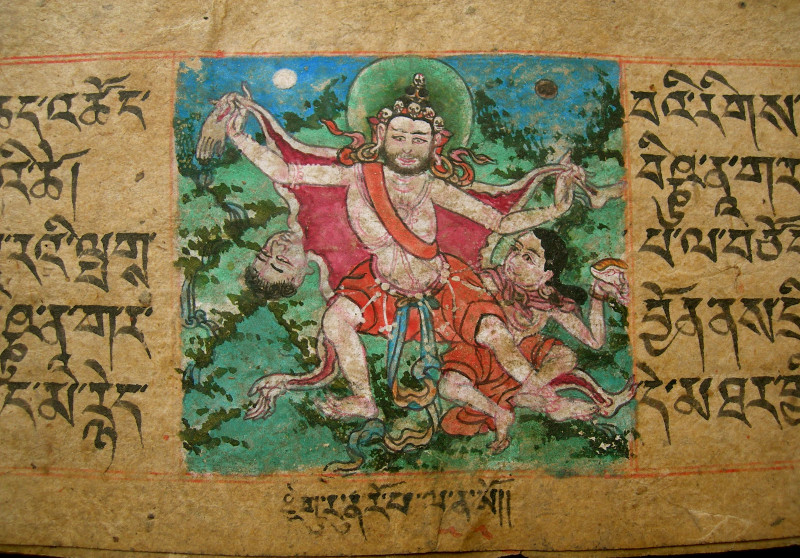We are pleased to announce the arrival of the TBRC exhibition space on the Google Cultural Institute (GCI) platform, online and via mobile device. The TBRC partnership with GCI will allow people worldwide to intimately explore and interact with high-resolution images from select manuscripts in our digital archive.
You can visit TBRC's collection on Google Cultural Institute at the end of this article, access the webpage or download the app.

Karma Kagyu musical score from Pelpung Monastery,
now available on Google Cultural Institute.
See in library.

Page from Ripa Bayo's symbolic teachings, based on his visions and dreams,
now available on Google Cultural Institute.
See in library.
The Google Cultural Institute brings together millions of artifacts and archives from partners around the world, making significant cultural material digitally available to all in a virtual museum setting. The aim of GCI is to increase the range and volume of material from the cultural world that is available for all to explore online and in doing so, democratize access to it, and preserve it for future generations.
In this initial launch, TBRC is releasing three exhibits onto the Google Cultural Institute, all comprised of pages of rare manuscripts from the TBRC archive, with curatorial notes and context from TBRC staff. These three exhibits, now live on Google Cultural Institute, highlight the 84 Mahasiddhas, figures of Buddhist legend and lore, notation of the Tibetan Buddhist musical tradition, and the visionary writings of Ripa Bayo, a Tibetan traveler and prophet.
These texts were selected for Google Cultural Institute for their vivacity; the musical scores displayed in "Musical Notation, DivineInvocation," are read and played today, and the stories of the 84 Mahasiddhas are told and known by Buddhist people across the world. Ripa Bayo's tales reflect human questions that resound clearly today: How do we demarcate our place in a rapidly shifting political and spiritual landscape? What do we make of our changing world?
What visitors will find in these exhibits are human stories, stories of frustration and wonder, suffering and surprise. Across the exhibits, we find signs of the need to make sense of our human place in the cosmic order. The manuscripts evidence that this place is not so fixed; with the proper means, we can summon deities with the sounds of horns and cymbals, we can experience prophetic dreams and record the future, we can attain lucid realization of the nature of reality.

Naropa: The Dauntless. Now available on Google Cultural Institute.
See in library.
The partnership between TBRC and Google Cultural Institute will connect the public with the incredible recorded wisdom of the Tibetan tradition; our hope is that those who engage with our exhibits will leave with a fuller, richer, and more human picture of Tibetan Buddhism across time.
We look forward to sharing as we continue to curate exhibits and upload items from our archive onto the Google Cultural Institute.





Sorry, the comment form is closed at this time.